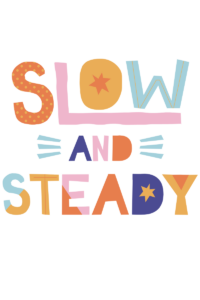
Thank you for showing support to the Zenned Math website.



Let’s be B.F.F.R—math can stress kids out. You’ve seen it: the frozen-in-place stare, the pencil tapping like it’s sending an SOS, or the classic “I CAN’T DO THIS!” meltdown before even trying. But here’s the thing—most of the time, their struggle isn’t about numbers. It’s about mindset.
What if we borrowed some life coaching techniques to help our students not just survive math but actually thrive in it? Let’s break it down into simple, practical ways you can empower your students without turning into a full-blown therapist.
Ever notice how kids say “I’m bad at math” like it’s their official personality trait? That belief is holding them back more than any tricky word problem ever could.
How to Do It:
Remind them that they once thought tying their shoes was impossible, and look at them now—shoe-tying pros. Math is just another skill that takes practice.

We can’t expect students to push through challenges if they’re spiraling into math-induced panic mode. When frustration kicks in, their brains hit the “I’m out!” button.
How to Do It:
If a kid already feels lost, telling them “just keep practicing” is like saying, “just climb this mountain real quick.” Instead, break it into steps.
How to Do It:
Remind them “If you can memorize every single lyric to that TikTok song, you can 100% remember a few math strategies.”
Honestly research shows long term memory is activated when we leverage different modalities in our lessons. It’s how the brain learns math.
Fluency is about thinking efficiently, not racing to the answer. The goal isn’t to turn kids into human calculators—it’s to help them use numbers flexibly.
How to Do It:

The way kids talk to themselves about math shapes their experience with it. If they constantly say, “I can’t do this,” their brain believes it. Time to switch up the self-talk game.
How to Do It:
Emphasize- “You wouldn’t let your best friend talk trash about you, so don’t let your brain do it either!”
At the end of the day, teaching math fluency isn’t just about numbers—it’s about helping kids believe they can figure things out. When we shift from just teaching math to coaching their mindset, we create students who are not only fluent in math but confident in life.
So, here’s your challenge: What’s one small move you can try this week? Whether it’s shifting self-talk, celebrating small wins, or breaking down frustration, pick one and run with it.
Oh, and if you want more strategies like these, check out my Figuring Out Fluency series, (Book 1) (Book 2) where we make fluency engaging, empowering, and (most importantly) actually make sense.
And if you want more math mindset strategies, grab my Guide For Teachers To Help Students With Growth Mindset